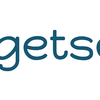In today’s fast-paced work environment, managing office information efficiently is crucial for productivity and smooth operations. Digital tools have transformed the way offices handle data, communication, and workflow management, allowing teams to stay organized and focused. These tools not only save time but also reduce errors and improve collaboration across departments.
Streamlining Communication and Collaboration
Effective communication is the backbone of any successful office. Digital communication platforms have revolutionized this aspect by enabling instant messaging, video calls, and file sharing in one place. These tools eliminate the delays of traditional email and reduce the clutter of endless threads. Teams can discuss projects in real time, share updates instantly, and keep all communication organized under relevant topics or groups. 오피스타 This seamless exchange of information fosters collaboration and ensures that everyone is on the same page.
Organizing Documents and Data
Managing documents manually can lead to misplacement, version control issues, and wasted time searching for files. Digital document management systems solve these problems by providing centralized storage with easy access and search functions. These platforms support various file formats and often include features such as automatic backups, version history, and permission controls to safeguard sensitive information. With everything stored in a secure cloud environment, employees can access necessary documents anytime and anywhere, promoting flexibility and efficiency.
Automating Routine Tasks
Repetitive administrative tasks like scheduling, data entry, and report generation consume valuable time that could be better spent on strategic work. Automation tools are designed to handle these tasks swiftly and accurately. By integrating with other office systems, they can trigger workflows, send reminders, and generate analytics without human intervention. This reduces the risk of errors and frees staff to focus on higher-value activities, ultimately boosting overall productivity.
Enhancing Project Management
Digital project management tools help teams plan, track, and deliver projects within deadlines and budgets. These tools allow users to assign tasks, set priorities, monitor progress, and share updates with stakeholders in real time. Visual dashboards and analytics provide a clear overview of project status, helping managers identify bottlenecks early and allocate resources efficiently. By keeping all project-related information centralized, teams avoid miscommunication and maintain momentum.
Securing Sensitive Information
Data security is a top concern when managing office information digitally. Advanced digital tools offer encryption, multi-factor authentication, and role-based access controls to protect sensitive data from unauthorized access. Regular updates and compliance with industry standards ensure that information remains secure against cyber threats. A secure digital environment builds trust among employees and clients and prevents costly data breaches.
Conclusion
The integration of digital tools in office information management is no longer optional but essential for modern businesses. These tools enhance communication, streamline document handling, automate routine tasks, improve project oversight, and safeguard data. Embracing the right digital solutions tailored to an organization’s specific needs leads to more efficient workflows, better collaboration, and ultimately, greater success. Investing in such technology is a strategic move toward a more agile and productive workplace.















